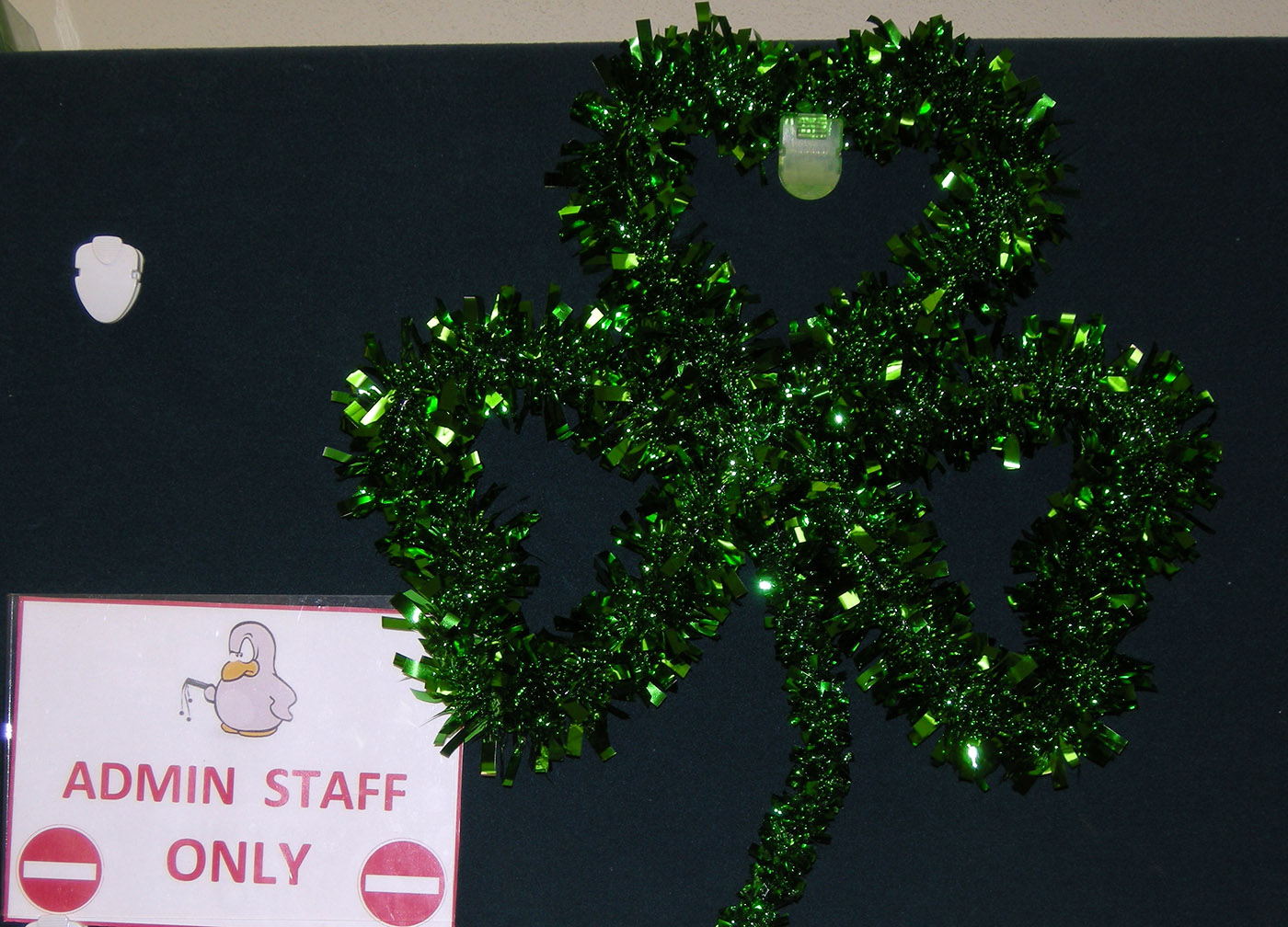Antonsson, Gadal, Halloran, Karaffa, Kelley, Lovegreen, Norrington, Padilla, Parenti, Ponce, Weinberg, Zhang—apart from Patricia Halloran and Ryan Kelley, you wouldn’t think that UCSB Geography staff had much Irish blood (and actually, Ryan is Hungarian, not Irish, but it’s a long story), but that didn’t stop them from celebrating St. Patrick’s Day. Not only did all staff wear something green on March 17, but a leprechaun with the unlikely name of Bernadette Weinberg (German/Slovakian) laid out a spread of green veggies and accompaniments in the Geography kitchen for all to enjoy.
Celery, broccoli, sugar snap peas, cucumbers, bell peppers, guacamole, green chips, and green grapes rounded out the main spread, with a bag of something called wasabi peas lurking in the background. Admittedly, the Guinness was missing, but a big shamrock made of green tinsel adorned the overhead kitchen cabinet, and, either way, it was probably the healthiest staff food donation we’ve had in years!
Ironically, the tradition of dyeing food, and even rivers, green in honor of St. Patrick’s Day in America has a dark side: “Green food may mean party time in America, where St. Patrick’s Day has long been an excuse to break out the food dye. But in Ireland, where the Irish celebrate their patron saint on March 17, green food has bitter connotations that recall the nation’s darkest chapter, says historian Christine Kinealy.
The reason, Kinealy explains, is the Irish potato famine of the 1840s, which forced so many Irish to flee mass starvation in their homeland in search of better times in America and elsewhere. Those who stayed behind turned to desperate measures. “People were so deprived of food that they resorted to eating grass,” Kinealy tells The Salt. “In Irish folk memory, they talk about people’s mouths being green as they died.”
At least a million Irish died in the span of six years, says Kinealy, the founding director of Ireland’s Great Hunger Institute at Quinnipiac University in Connecticut. Which is why, for an Irishwoman like Kinealy, who hails from Dublin and County Mayo, the sight of green-tinged edibles intended as a joyous nod to Irish history can be jolting, she says. “Before I came to America, I’d never seen a green bagel.” She says. “For Irish-Americans, they think of dying [sic] food green, they think everything is happy. But really, in terms of the famine, this is very sad imagery” (npr.org: “The Dark History of Green Food on St. Patrick’s Day”).
Article by Bill Norrington




